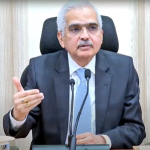FEb 14, 2020
New Delhi: Sluggish global and local economic conditions continued to dent India’s external merchandise trade, as both exports and imports inched lower in January.
Some analysts also cited the spread of Coronavirus in China for subduing sentiments and said that the epidemic, if not contained, will become a major hurdle for global trade.
The data furnished by the Ministry of Commerce and Industry on Friday showed that India’s exports fell by 1.66 per cent in January on a year-on-year basis to $25.97 billion from $26.41 billion reported for the corresponding period of the previous year.
Similarly, on a sequential basis, exports were lower than $27.36 billion worth of merchandise that were shipped out in December.
“Cumulative value of exports for April-January 2019-20 was $265.26 billion as against $270.49 billion during April-January 2018-19, registering a negative growth of (-) 1.93 per cent in dollar terms,” the ministry said in a statement.
“Non-petroleum and non-gems and jewellery exports in January 2020 were $19.79 billion, as compared to $19.94 billion in January 2019, exhibiting a negative growth of (-) 0.78 per cent,” it added.
As per the data, imports declined by 0.75 per cent to $41.14 billion in January from $41.46 billion reported for the corresponding month of 2019.
“Cumulative value of imports for the period April-January 2019-20 was $398.53 billion, as against $433.77 billion during April-January 2018-19, registering a negative growth of (-)8.12 per cent in dollar terms. Oil imports in January 2020 were $12.97 billion, which was 15.27 per cent higher in dollar terms, compared to $11.25 billion in January 2019,” the statement said.
However, non-oil imports in January 2020 were estimated at $28.17 billion, which was 6.72 per cent lower in dollar terms, compared to $30.20 billion reported for the corresponding month of the previous year.
“Non-oil and non-gold imports were $26.59 billion in January 2020, recording a negative growth of (-)4.66 per cent, as compared to non-oil and non-gold imports of $27.89 billion in January 2019,” the statement said.
Consequently, the trade deficit widened to (-)$15.17 billion from (-)$15.05 billion reported in January 2019.
The trade deficit in December 2019 had narrowed to $11.25 billion as against the deficit of $14.49 billion in the corresponding period of 2018.
Commenting on the monthly data, FIEO President Sharad Kumar Saraf said that global and domestic factors have again pull-down the monthly exports.
Besides protectionism and liquidity concerns coupled with sudden spread of Novel Coronavirus in the world’s second largest economy, China has further worsened the global sentiment and exporters are delaying their shipments. Other key factors including trade war, tension between Iran and the US and slowdown in economies across the globe have also exaggerated the problem for India’s exports sector, added Saraf.
“The impact and duration of the coronavirus threat on manufacturing supply chains, tourism and trade poses a risk to the level of exports and imports of goods and services in the ongoing quarter. Regardless, the decline in commodity prices will cushion the impact on the current account deficit, which is now expected to print around 1% of GDP in FY2020,” ICRA Principal Economist Aditi Nayar said.
On its part, EEPC India Chairman Ravi Sehgal said exports continued to face global head winds in January even as the engineering exports dropped at a sharper pace of over four per cent.
“Going forward, the situation looks more challenging with huge uncertainties arising from the outbreak of Coronavirus in China and its impact on the global trade. Domestic factors like rising inflation which would have a dampening impact on lowering of interest rates would also be challenging,” Sehgal was quoted as saying in a statement.
According to Acuité Ratings and Research’s Lead Economist Karan Mehrishi: “The trade deficit at $133.3 billion (April-January) could have been higher had it not been for the lower imports of high value capital goods and electronics on the back of weak capital expenditure and consequent credit offtake.”
“Further, the contraction in gold and coal imports have also been able to offset the pressure on trade deficit; lower coal imports for one are a positive since it represents better domestic coal supplies, saving India some forex outgo. Having said that, we remain vigilant on the exchange rate despite the slight appreciation in the rupee.” iANS


















